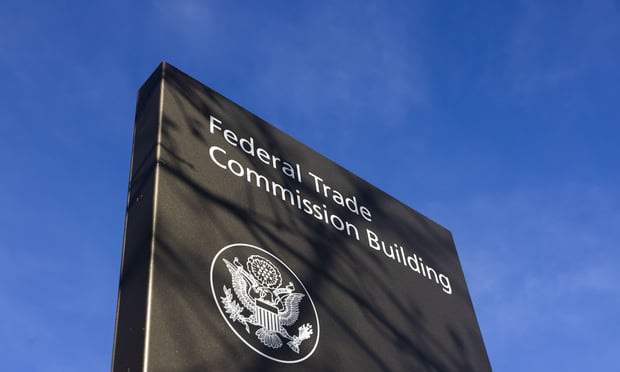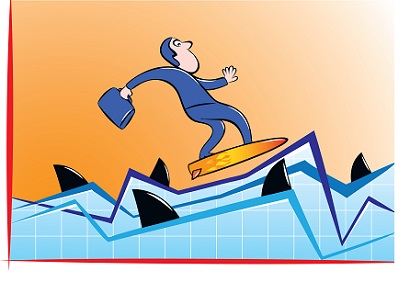 When the external environment is roiling, the key tosuccessfully navigating the tumult is to not just accept, but infact leverage, the forces of change. That often holds true forprofessionals in any career path, but it's certainly the case fortreasury professionals today.
When the external environment is roiling, the key tosuccessfully navigating the tumult is to not just accept, but infact leverage, the forces of change. That often holds true forprofessionals in any career path, but it's certainly the case fortreasury professionals today.
Since last decade's liquidity crisis, the role of the corporatetreasurer has been wholly transformed. In this era of heightenedcounterparty risk, low interest rates, and tight liquidity andcredit, effective management of the treasury function has become adetermining factor in businesses' success. As a result, therole of corporate treasurer has become both morevisible and more strategic than ever before.
|These days, CFOs and boards of directors are increasinglyrelying on the treasurer's insights to help them make the rightdecisions at the right time. From ensuring that global capitallevels are adequate to support growth and minimize liquidity risk, to engaging in corporate initiativesthat require proficiency with increasingly complex accounting, tax,legal, and regulatory rules, the treasurer's insights have been inhigh demand over the past decade. Likewise, the value of astrategic treasurer has become more pronounced. Effectivetreasurers today are measured on their ability to manageinitiatives beyond the traditional role. And their ability tosuccessfully support the varied needs of their company may welldefine the strategic direction of the organization.
|Of course, treasurers must continue to ensure that theircompany's payments mechanisms are effective, that its cash flowforecasting and management are appropriate, and that relationshipswith its banks remain productive. At the same time, they mustnavigate new regulations and technologies, which are having aprofound impact on the day-to-day operations of their function, aswell as on the banks that support them. And they need to beprepared to advise senior management on the cash-flow implicationsof expanding into new markets around the world. Managing it all isa challenge—but within the challenge lie unmistakableopportunities.
|The Regulatory Opportunity
|People usually don't think of government regulations as a sourceof great opportunity, but viewing regulations as only a burden isshortsighted. The recent onslaught of regulations, in itsabundance, has changed the ways in which both banks and treasuryfunctions operate. And the changes continue to come. In fact, a newregulation is published every 22 days, according to a 2013 reportfrom the Financial Times. Keeping up with these changesoften presents challenges, yet smart treasurers are embracing theopportunities.
|For example, the Single Euro Payments Area (SEPA) presents substantialopportunities for any company that accepts payments or performscash management functions within the Eurozone. Most organizationswill have to alter their accounts receivable (A/R) technologyinfrastructure in order to comply with SEPA. Treasurers whoembrace the potential for improvements that is inherent in thischange are revamping processes and automating receivablesactivities. Some are looking at SEPA as a good reason tostandardize and centralize payment processes, not only in theEurozone but around the world. By going above and beyond the letterof the law, leading treasuries are finding opportunities to lowertheir company's operating costs, increase integration among theirsoftware systems, and achieve big benefits through economies ofscale.
|Geographic Economic Power Shift
|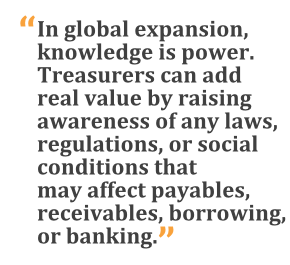 On top of the legal and regulatory issues that directlyaffect their function, treasurers need to stay abreast of thecontinuously evolving global economic environment. Economic poweris clearly shifting to the south and to the east. HSBC expectsgrowth rates of around 1.7 percent for the developed world,compared with about 4.9 percent for the emerging world, driven byAsia and Latin America. And while the rise of trade in the southernhemisphere may not appear to be a boon for Western companies, thereare opportunities for developed-world businesses to plug into thisgrowth if they know where they can add value in today'sincreasingly disaggregated supply chains.
On top of the legal and regulatory issues that directlyaffect their function, treasurers need to stay abreast of thecontinuously evolving global economic environment. Economic poweris clearly shifting to the south and to the east. HSBC expectsgrowth rates of around 1.7 percent for the developed world,compared with about 4.9 percent for the emerging world, driven byAsia and Latin America. And while the rise of trade in the southernhemisphere may not appear to be a boon for Western companies, thereare opportunities for developed-world businesses to plug into thisgrowth if they know where they can add value in today'sincreasingly disaggregated supply chains.
Emerging markets are increasingly consumers and investors aswell as producers. Latin America is already a net importer ofmanufactured goods. The astonishing fact is that globally another3 billion people are expected to join the middle class in thenext 40 years, most of them in the emerging world. In 2012,emerging economies generated almost one-third of global foreigndirect investment outflows, according to the United NationsConference on Trade and Development (UNCTAD). It is important tonote that although China is a major force in emerging-market growthtrends, it is not alone. In fact, we have already seen somemanufacturers that operate in China shifting toward moresophisticated, less labor-intensive processes as land and wagecosts rise there.
||These global geographic and demographic shifts are impactingcompanies' working capital positions, their payables andreceivables, their liquidity position, and their trade financerequirements. Due to the interconnectivity of the global economy,coupled with the inherent shift in economic growth, few treasuryfunctions are isolated from these changes, regardless of theirorganization's current mix of international and domestic business.Ultimately, we are all affected by the evolution of themacroeconomic global environment, and we will continue to beaffected in the coming years. As corporations expand sales channelsor supplier networks around the world, the challenge for treasurerswill be extending the financial supply chain so that it alwaysprovides optimal support for the organization's physical supplychain. In many cases, moving into new markets raisesclearing-infrastructure or regulatory issues that the company maynot have dealt with previously, issues that may well impact otherareas, such as liquidity management.
|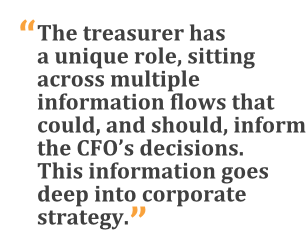 In global expansion, knowledge is power. Companiesentering a new market need a clear picture of all the ways in whichthat market's unique characteristics might impact their cash flow.Thus, treasurers can add real value when their organization isventuring into the unknown by raising awareness of any laws,regulations, or social conditions that may affect payables,receivables, borrowing, or banking activities in the region. Acompany's expansion plans, including the introduction of newproducts, is not going to get off the ground easily if the treasuryteam doesn't manage currency and foreign exchange issues properly,or if they've overlooked a necessary component of theinfrastructure for making or receiving payments.
In global expansion, knowledge is power. Companiesentering a new market need a clear picture of all the ways in whichthat market's unique characteristics might impact their cash flow.Thus, treasurers can add real value when their organization isventuring into the unknown by raising awareness of any laws,regulations, or social conditions that may affect payables,receivables, borrowing, or banking activities in the region. Acompany's expansion plans, including the introduction of newproducts, is not going to get off the ground easily if the treasuryteam doesn't manage currency and foreign exchange issues properly,or if they've overlooked a necessary component of theinfrastructure for making or receiving payments.
Identifying, disseminating, and communicating this informationrequires a treasurer to leverage multiple information streams,including legal counsel, tax experts, consultants, client-facingresources, and banks. At the same time, the treasurer mustcultivate an internal network for influencing and driving changewithin the company. The ability to consolidate knowledge fromdisparate sources and effectively convey it to corporate managementis of paramount importance for global treasurers, especially whenthey're entering new markets. Employing a communal approach todiscussions about entering new markets—including steering committeeand working group members from each discipline—helps a treasurer,and his or her company, better understand all the relevantdecisions. It's a challenge, to be sure. But like regulatorychanges in familiar markets, it's also an opportunity fortreasurers to prove their strategic worth.
||
Technology Rules the Day
|Technology has utterly revolutionized consumer banking over thepast 10 years. Now it's doing the same for commercial banking.Corporate banking customers are gaining greater visibility intotheir money and greater power to direct it where (and when) theysee fit. For example, advanced rule-based end-of-day sweepingallows for a passive, scenario-based concentration of excessliquidity. Layered in on top of this are advanced rule-basedinvestment engines that automate the management of excess liquiditypositions to any number of investment end points.
|Additionally, the regional and global enterprise resourceplanning (ERP) tools that are now commonplace at many organizationsenable treasurers to develop meaningful, objective, and strategicrecommendations rapidly using real-time global information. Asglobalization continues to mature, so will the concepts of virtualand mobile treasury. Not only can new technologies simplify atreasurer's day-to-day operations, but they can also providevaluable insights.
||The treasurer has a unique role, sitting across multiple information flows thatcould, and should, inform the CFO's decisions. This informationgoes much deeper into corporate strategy than just cash positions.Internally, treasurers must effectively digest information andincorporate input from financial planning, business development,and sales and marketing to ensure that objectives are clear andthat the necessary resources are made available. Externally,feedback from shareholders, ratings agencies, banks, and othercredit providers should help shape the appropriate capitalstructure and deployment strategies. Treasurers who succeed inusing technology to collect, marshal, and deploy information byorchestrating meaningful and comprehensive discussions can addsignificant value to their organization and thereby help solidifytheir strategic position within the company.
|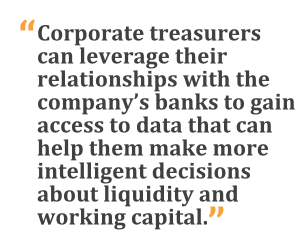 Furthermore, corporate treasurers can leverage theirrelationships with the company's banks to gain access to data thatcan help them make better-quality, more intelligent decisions aboutliquidity management and the company's working capital. Banks areeffectively the ambassadors of best practices in liquidity andworking capital management across various industries andgeographies. The strategic treasurer leverages the knowledge of hisor her partner banks to understand the drivers of successes andfailures in other organizations. In the future, clients will leanon banks more than ever before, and the ability of a bank todeliver valuable information will ultimately dictate the success ofthese relationships.
Furthermore, corporate treasurers can leverage theirrelationships with the company's banks to gain access to data thatcan help them make better-quality, more intelligent decisions aboutliquidity management and the company's working capital. Banks areeffectively the ambassadors of best practices in liquidity andworking capital management across various industries andgeographies. The strategic treasurer leverages the knowledge of hisor her partner banks to understand the drivers of successes andfailures in other organizations. In the future, clients will leanon banks more than ever before, and the ability of a bank todeliver valuable information will ultimately dictate the success ofthese relationships.
In fact, HSBC has found that our conversations with ourcustomers have changed. When considering expansion into a newmarket, clients now seek our help and guidance in how to structuretheir operations for success rather than help in just makingpayments. Aided by new technology and greater insights, banks areable to provide advisory services, as well as implement newtechnology. It's a rapidly-evolving model of “value added.” Thesechanges open up the possibility of new collaboration betweencompanies and across all banking partners in a way that has notbeen possible before.
||
Embracing the Trends
|At the intersection of technology advancements, evolvingregulatory regimes, and global economic shifts sits the corporatetreasury function. To meet expectations in this environment, atreasurer must bring valuable new insights to the conference roomtable.
|Many businesses are finding that the best way to winnow outthese insights is to standardize and centralize the global treasuryorganization. Smart treasurers help their company compare thebenefits and tradeoffs of different organizational structures,weighing customization and independence of action againstcompanywide strategic partnerships, collaboration, and sharedservices.
|According to a 2013 CapGemini payments report, several key industryinitiatives under way now are specifically focused on payments,including SEPA migration. While their individual objectives maydiffer, they are all primarily aimed at standardizing processes forgreater transparency and enhanced risk management.
|At the same time, many markets that have traditionally beenrestricted are opening up, making it more feasible to run a trulyglobal treasury function. For example, China is working toward internationalization of the renminbi(RMB), which will make it easier for companies to conductcross-border business inside and outside of mainland China.
|Clearly, there is no simple recipe for success in this day andage. Standardizing treasury is a good option for many companies,but it's not right for every business. Ultimately, moderntreasurers need to analyze the intelligence needs of theirorganization as it works to manage the risks and seize theopportunities that the future brings. Then they need to determinehow they can generate valuable insights that support thosedecisions. At the top of the list for most treasurers will beunderstanding the macroeconomic changes in the world, analyzing thetreasury impacts of globalization and the economies of scale thataccompany it, grasping the ramifications on cash flow of theunrelenting march of technology, and positioning the treasuryfunction for the increasingly important role companies areexpecting it to fill. Those treasurers who embrace thesetrends—and, of course, their related insights—will be those bestpositioned to thrive in the long-term.
|
———————————————-
| Diane S.Reyes is global head of payments and cashmanagement for HSBC Holdings plc, managing P&L ownership,product, client, risk, and operations management as well as salesand distribution across the globe.
Diane S.Reyes is global head of payments and cashmanagement for HSBC Holdings plc, managing P&L ownership,product, client, risk, and operations management as well as salesand distribution across the globe.
 MichaelCummins is executive vice president and NorthAmerica head of payments and cash management for HSBC, overseeingall sales, client, business, risk, and control management of thefunction as well as product strategy and innovation in the region.
MichaelCummins is executive vice president and NorthAmerica head of payments and cash management for HSBC, overseeingall sales, client, business, risk, and control management of thefunction as well as product strategy and innovation in the region.
Complete your profile to continue reading and get FREE access to Treasury & Risk, part of your ALM digital membership.
Your access to unlimited Treasury & Risk content isn’t changing.
Once you are an ALM digital member, you’ll receive:
- Critical Treasury & Risk information including in-depth analysis of treasury and finance best practices, case studies with corporate innovators, informative newsletters, educational webcasts and videos, and resources from industry leaders.
- Exclusive discounts on ALM and Treasury & Risk events.
- Access to other award-winning ALM websites including PropertyCasualty360.com and Law.com.
*May exclude premium content
Already have an account? Sign In
© 2024 ALM Global, LLC, All Rights Reserved. Request academic re-use from www.copyright.com. All other uses, submit a request to [email protected]. For more information visit Asset & Logo Licensing.




